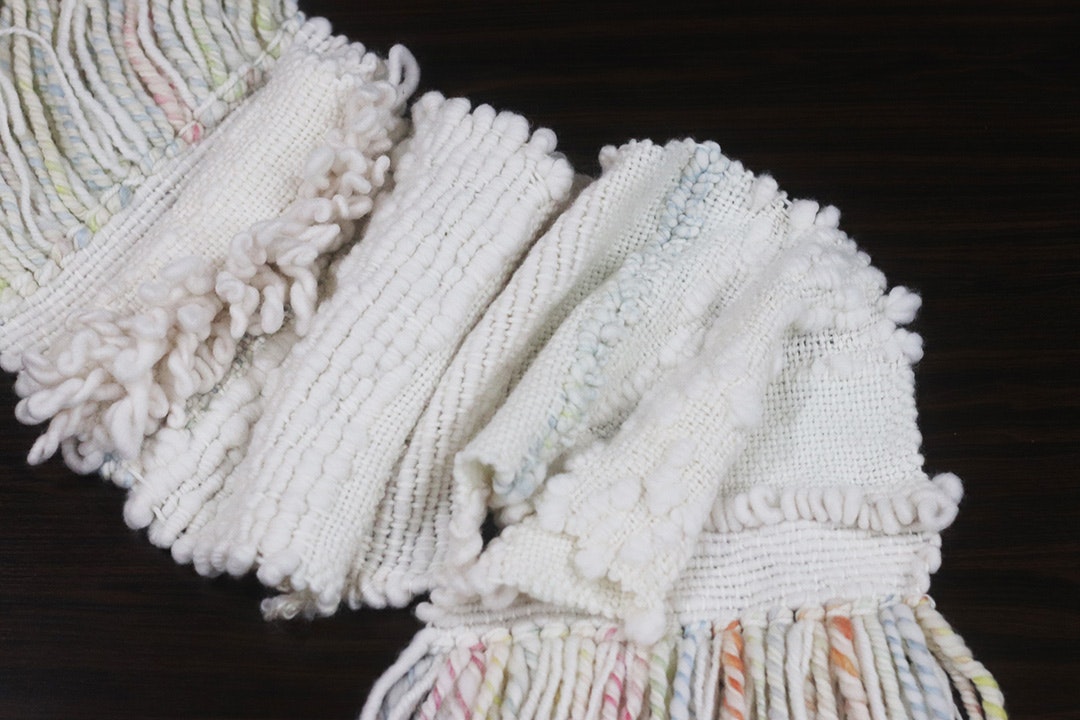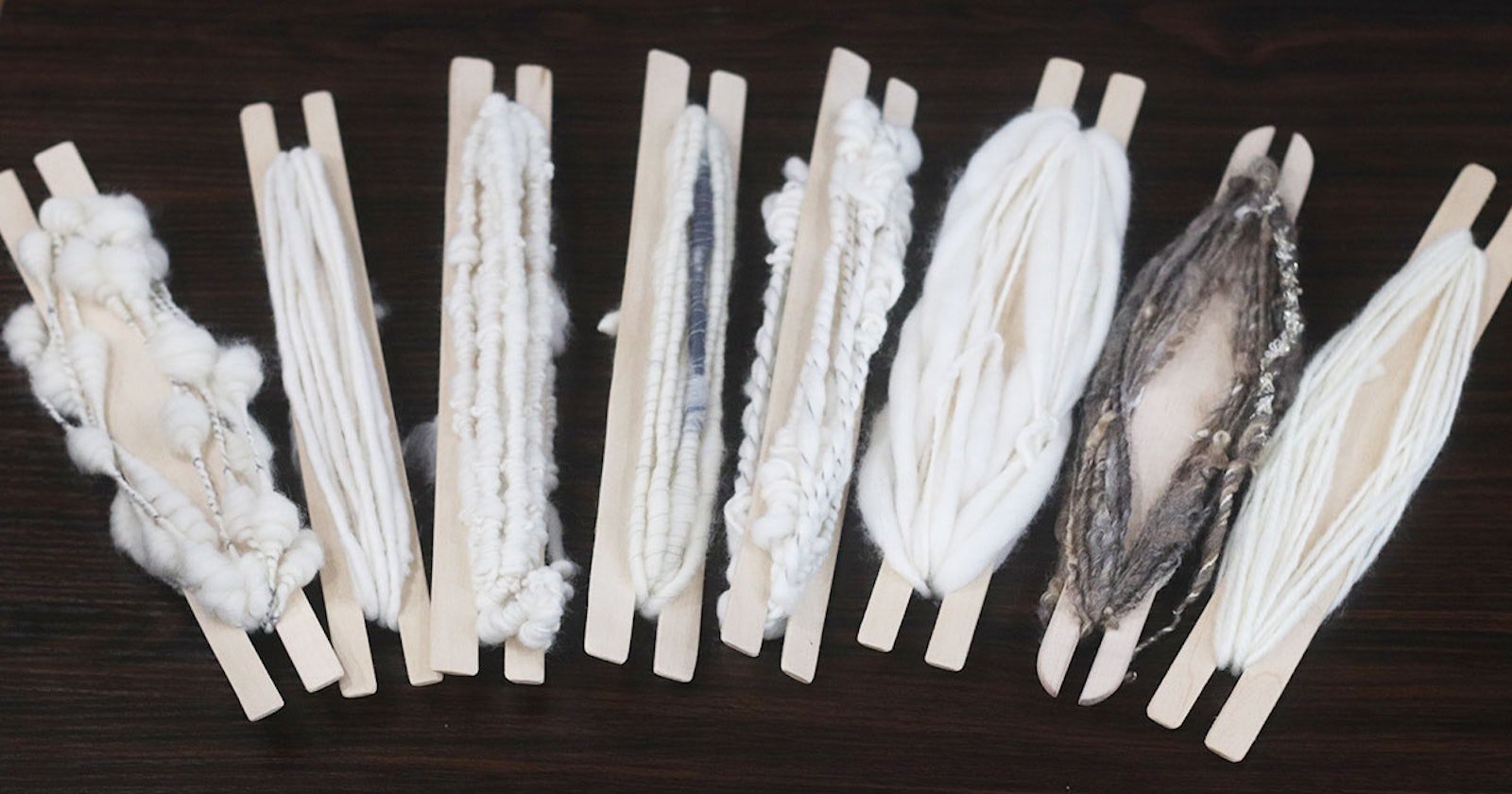I love to create art yarns—it gives my hands a chance to be free and rebellious. No short-forward draw here! After spending hours practicing and mastering making art yarn, from slub to thick-and-thin yarns, handspinners often ask themselves, “Now what?” Many wonder how to showcase the distinctive look of their yarn and use it in a project. One of my favorite ways to use my art yarn is for weaving.
Art yarns are not beginner yarns. Be sure to create solid, well-constructed yarns, as weaving can put your yarns to the test. I find the ones that work well for weaving are thick-and-thin, corespun, auto wrapped, locks, super coiled, and beehive yarns. These yarns are three-dimensional and can be manipulated to give depth to your finished piece.
When spinning with an end project in mind, it’s always a best practice to consider fiber choice. Use fibers that bloom to help aid in the dimensionality of your art yarn. I recommend Polwarth or Targhee. One of the magical qualities of weaving is watching the fabric change after fulling the finished piece. A nice, warm bath allows the yarn to blossom, providing a cohesive finishing touch. Some art yarns can have complicated structures, so be sure to full gently. Let the yarn open but ensure that it retains its beautiful structure. Also, be sure to take care when fulling so as not to tangle your fringe.

Emonieiesha suggests making a sampler wrap or wall hanging to see how art yarns work best when weaving.
On the Loom
I use a 10" rigid-heddle loom and DIY stick shuttles because the thicker yarns can be a challenge going in the shed. Use shorter lengths of yarn on your stick shuttle to make the weaving fluid. You may have to use your hands to aid beating so you don’t lose the texture.
To give my art yarns all the glory they deserve, my go-to warp is a fingering-weight yarn. The warp can be superwash or non-superwash yarn. Using a fine yarn for the warp allows the warp to sink in and let the weft yarns take over.
Traditionally, the warp will also be your fringe, but not always. I like to use a bulky handspun and tie rya knots to my warp fringe. This allows you to create whatever fringe you like.
I encourage you to make a sampler so you will have a guide to learn which yarns you prefer to use. Textured yarns make a great wrap or wall hanging. But remember that when weaving with art yarns, a finished piece can become heavy, so be sure not to make your finished piece too long.
Emonieiesha Hopkins is a Chicago, Illinois, fiber evangelist. She loves to gather her wool and good fiber friends, any time, any place. Emonieiesha can be reached via www.hopkinsfiberstudio.com.

